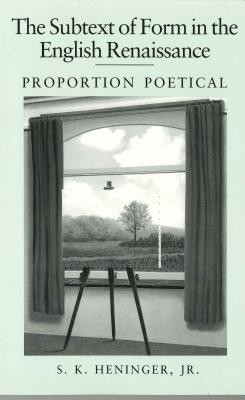
- We will send in 10–14 business days.
- Author: S K Heninger
- Publisher: Penn State University Press
- ISBN-10: 0271027347
- ISBN-13: 9780271027340
- Format: 15.2 x 22.9 x 1.3 cm, minkšti viršeliai
- Language: English
- SAVE -10% with code: EXTRA
Reviews
Description
During the sixteenth century in England the logocentrism of the Middle Ages was confronted by a materialism that heralded the modern world. With remarkable tenacity in music, poetry, and painting, the orthodox aesthetic persisted as formal features which served as nonverbal signs and provided a subtext of form. In opposition, however, a radical aesthetic emerged to accommodate the new attention to physical nature. The growing force of materialism occasioned a fundamental rethinking of what an artifact might represent and how that representation might be achieved. This book explores the ontological and epistemological issues that poststructuralist thought raises about that shift in our cultural history. In doing so, it charts a course for Renaissance studies, now in disarray, that avoids the old positivism while not succumbing to the new nihilism.
EXTRA 10 % discount with code: EXTRA
The promotion ends in 22d.13:51:15
The discount code is valid when purchasing from 10 €. Discounts do not stack.
- Author: S K Heninger
- Publisher: Penn State University Press
- ISBN-10: 0271027347
- ISBN-13: 9780271027340
- Format: 15.2 x 22.9 x 1.3 cm, minkšti viršeliai
- Language: English English
During the sixteenth century in England the logocentrism of the Middle Ages was confronted by a materialism that heralded the modern world. With remarkable tenacity in music, poetry, and painting, the orthodox aesthetic persisted as formal features which served as nonverbal signs and provided a subtext of form. In opposition, however, a radical aesthetic emerged to accommodate the new attention to physical nature. The growing force of materialism occasioned a fundamental rethinking of what an artifact might represent and how that representation might be achieved. This book explores the ontological and epistemological issues that poststructuralist thought raises about that shift in our cultural history. In doing so, it charts a course for Renaissance studies, now in disarray, that avoids the old positivism while not succumbing to the new nihilism.


Reviews